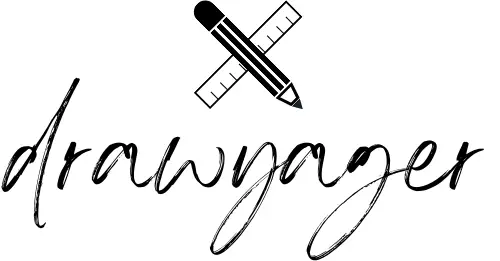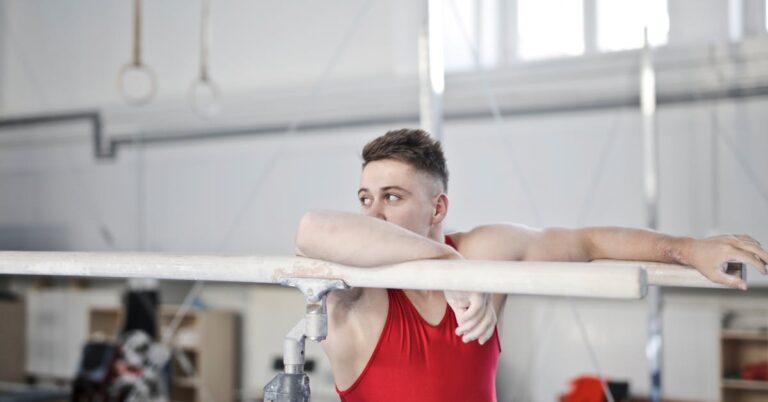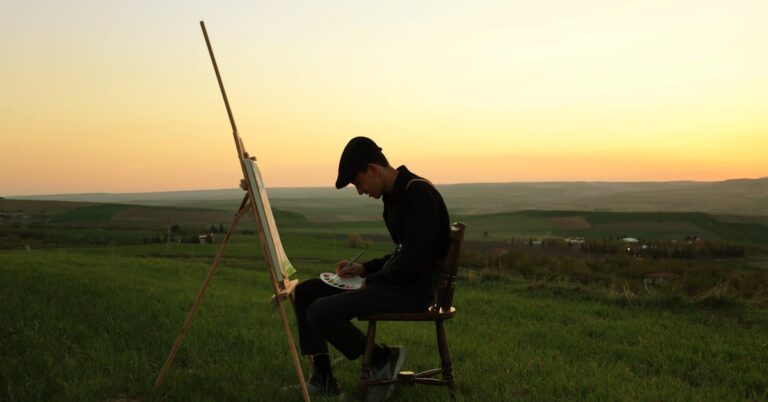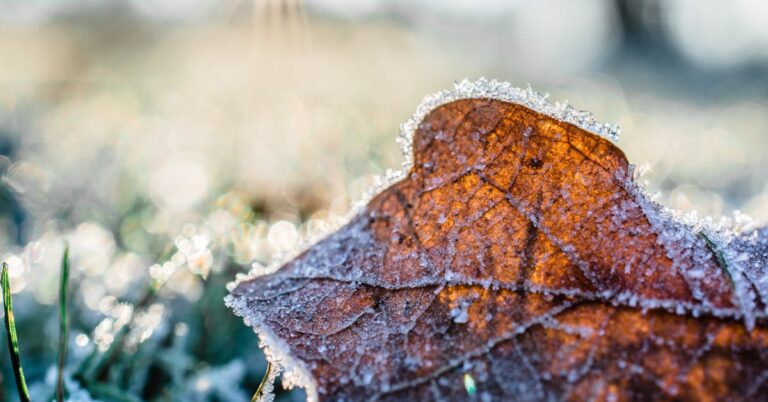Have you ever caught yourself watching a cat and felt the urge to capture its grace and lively essence in your artwork? Sketching cats presents a wealth of inspiration, and it’s quite evident why this is the case. Our beloved feline companions spark our artistic fervour with their mischievous antics and a variety of facial expressions. Being someone who adores cats and has a zeal for creating art, I’ve found that portraying these charming creatures is an enjoyable and rewarding way to improve my artistic skills.

Exploring different styles and techniques has led me to discover that whether it’s a majestic lion or a cozy housecat curled up on a sunny windowsill, each one has a unique charm. Simple line drawings can convey their elegance, while a more detailed approach can capture their intricate fur patterns and the depth in their eyes. No matter your experience level, there’s a method to suit your abilities and plenty of inspiration to be found. And there are a lot of cats out there, in every size, so there are nearly infinite amounts of cat drawing ideas.
Basics of Cat Anatomy
When I first explored cat drawing ideas, knowing the basics of cat anatomy proved crucial for a lifelike representation. Understanding the structure of facial features, body proportions, and the finer details of paws and tails is the foundation for any great cat sketch.
Even if I guess, that everybody knows what a cat looks like. Pay attention to the details to get the best out of your cat drawing ideas.
Facial Features
Cats possess distinctive facial features that are essential to capture in drawings. Their eyes are usually large and almond-shaped, often conveying a sense of curiosity or alertness. Careful attention must be paid to the position and size of the eyes as they can drastically change the expression of the cat. Their ears are triangular and sit atop the head; the placement and direction of the ears can indicate the cat’s mood – alert, relaxed, or fearful. When drawing a cat’s nose and mouth, I always keep in mind their small, rounded nose and the subtle curve of their mouth.

Body Proportions
Getting a cat’s body proportions correct is key to a believable drawing of your cat drawing ideas. A typical cat’s body is divided into graceful, elongated lines with a supple spine that allows for their characteristic agility. The body can be sketched using connected ovals to represent the chest and hindquarters, which helps maintain balance in the drawing. Comparatively, the legs are slender, with the hind legs being slightly longer than the front, which contributes to their powerful leaps.

But if you want to create a nonrealistic cat drawing, you can always play with the body proportions. That way you can make them look sinister or hilarious. Just try it out!
Paw and Tail Details
The paws of a cat are as expressive as their faces. They consist of five toe pads, with the front paws having a unique, ‘thumb-like’ pad that aids in their gripping ability. When I draw paws, I emphasize the soft, rounded pads and the sharp, retractable claws that peek out when extended. The tail is another expressive element; its length and the way it’s carried can indicate a cat’s mood, whether it’s held high in confidence or tucked away in fear. So pay close attention to the tail’s tapering shape and fluid motion.

Popular Cat Breeds for Cat Drawing Ideas
When it comes to cat drawing ideas, certain breeds stand out with their unique features and characters. These breeds are great for practicing different aspects like fur texture, shape, and even personality through art. Let me guide you through some beloved cat breeds that are perfect muses for your drawing endeavors.
Persian Cats
Persian cats are famous for their luxurious fur and distinctive smooshed faces. Their long, flowing coats are a delight to draw and offer a great opportunity to practice portraying different textures. Remember, the key to capturing a Persian’s regality is in the details of its fluffy cheeks and serene expression.

Siamese Cats
Siamese cats, known for their sleek, slender bodies and striking blue eyes, are a joy to sketch. Their short coats have a unique color-point pattern, where the extremities are a darker shade than the rest of the body. Capturing the contrast without losing the shape of their muscular, elegant structure is a fun challenge.

Maine Coon Cats
Majestic Maine Coon cats carry a presence that is both imposing and endearing. They boast a ruff of fur around their neck, reminiscent of a lion’s mane, and tufted ears. My advice for drawing Maine Coons? Pay special attention to their size and bushy tails to do justice to their grand appearance.

Sphynx Cats
The Sphynx cat, with its lack of coat, presents a unique cat drawing idea. The focus for a Sphynx is on the wrinkles and skin texture, with an emphasis on their large ears and wide-set eyes. Drawing a Sphynx offers a fascinating study of feline anatomy without the distraction of fur.

Poses and Postures
Exploring various poses and postures is a great way to enhance your collection of cat drawing ideas. Let’s dive straight into some specific positions that every cat lover and artist should try capturing in their artwork.
Sitting Positions
Cats have a charming way of sitting that can range from the regal “loaf” to a more relaxed, casual sit. When I draw cats in sitting positions, I focus on the alignment of their back with the hindquarters and the placement of the paws. For a more dynamic feel, you can experiment with tilted heads or curled tails.

Lying Down
Every cat has its adorable way of lying down, whether they’re sprawling out on their side or curling up into a perfect circle. When capturing these poses, it’s crucial to pay attention to the natural curve of the cat’s body and the way their paws fold underneath. I find that using light sketch lines helps to map out their form before adding the final details.

In Action
Cats in motion provide exhilarating drawing opportunities. From a side profile of a cat mid-pounce to a front-facing cat with paws outstretched, these dynamic positions demand a good understanding of feline anatomy. To practice, I start with gesture drawings to get a feel for their movement, which can be refined to more detailed sketches as I understand their action better.

Expressive Cat Faces
Exploring various cat drawing ideas, I find that capturing the essence of a cat’s personality comes alive when I focus on Expressive Cat Faces. Let’s look at some distinct emotions you can convey in your artwork.
Happy Expressions
When I aim to reflect a happy mood in a cat’s face, I like to draw big, expressive eyes and a mouth slightly turned upwards. For inspiration that captures the whimsical side of felines, consider checking out cartoon cat ideas, which demonstrate how exaggerated features can evoke a sense of joy.
Curious Looks
Cats are renowned for their curiosity, which can be expressed through tilted heads or perked ears. I find that focusing on the positioning of the eyes and eyebrows can give a look of intrigue or deep interest. Observing how cats behave when they are curious helps to get these details just right.
Angry or Frightened
Cats often exhibit tell-tale signs when angry or scared, such as flattened ears, narrowed eyes, and a puffed-up tail. To depict an angry or frightened cat, I use sharp lines to bring out the intensity of their gaze and a hissing mouth or bared teeth to accentuate their emotional state.
Fur Texture Techniques
Exploring different fur texture techniques is essential to bring my cat drawing ideas to life with a touch of realism. Whether I’m aiming for the softness of short fur, the flow of long locks, or the intricate details of patterns, mastering these could make all the difference.
Short Fur
For short fur, I focus on delicate strokes with a sharp pencil to mimic the fine texture. Direction is key; I always ensure to draw the fur in the direction it naturally grows on the cat’s body. Also, watch for the movement of the cat you want to draw. If you’re interested, here is a detailed step-by-step-video of drawing a British short-hair-cat, that suggests using techniques like hatching and cross-hatching for added texture.
Long Fur
When dealing with long fur, I employ a blend of longer pencil strokes and shading to create depth and volume. It’s about layering—building from light to dark—to avoid a flat appearance. Long fur often requires patience as I slowly build the layers to achieve the right flow and fluffiness.
Striped and Spotted Patterns
Capturing striped and spotted patterns demands a mix of precision and randomness. For stripes, I draw with consistent pressure, allowing the natural variation in my pencil strokes to suggest volume. For spots, it’s about random placement but uniform shape, as I learned from the detailed techniques shown in this How to Draw Realistic Fur for Beginners video. With these patterns, you can loosen up your cat drawing ideas to create stunning drawings.
Use of Color and Lighting
When I work on cat drawing ideas, I find that color and lighting are game-changers. They breathe life into sketches, giving them depth and emotion. Let’s explore some specifics.
Shading Basics
Shading is crucial for adding dimension. I typically start with the light source in mind and use it to guide where my shading falls. For instance, if the light hits the cat from the top left, I’ll add shadows on the opposite side to shape the form of the body and face. I use a light hand and a mid-tone pencil to build up layers gradually, ensuring a realistic look.
Choosing a Color Palette
Selecting the right colors can tell a story. I like to pick a main color and complementary colors for harmony. A color wheel helps in identifying which shades work well together. For playful cat drawings, I go for bright, saturated colors; for more somber scenes, muted tones are my go-to. So always keep in mind, what kind of cat drawing ideas you want to bring to life.
Creating Contrast with Light
Playing with contrast can lead to some dynamic imagery. For instance, I often use a stark white highlight to make the eyes of my cat illustrations pop, juxtaposed with a dark shadow to enhance the fur texture. To create this effect, I layer colors from light to dark, or sometimes I’ll leave the paper blank in the areas I want to highlight the most.
Background and Environment
When I approach cat drawing ideas, I often consider where the cat is and what surrounds it. The location sets the mood and adds context to the feline subject—whether it’s lounging indoors or exploring the great outdoors.
Indoor Scenes
With my cat drawing ideas in my mind, I often find myself placing cats in familiar indoor settings. Think of a cozy nook with a window allowing soft light to spill onto a sleeping cat curled on a cushion. Here’s how I create such a scene:
- Furniture: Outline a simple chair or sofa—it need not be detailed but should invite comfort.
- Accessories: Sketch everyday objects like a book, a plant, or a ball of yarn to emphasize homeliness.
- Light and Shadow: Use light strokes for areas hit by light and heavier shading for shadows to lend a three-dimensional effect.

Outdoor Settings
For cats on an outdoor adventure – or maybe just laying in the grass on a warm, sunny day, I find outdoor settings require a bit more creativity. I consider the following elements:
- Nature: I often depict trees, grass, and flowers to create a natural landscape.
- Perspective: Adjusting the angle for an ant’s view can make my feline subject appear grander within its environment.
- Activity: I’ll add elements like a butterfly or a leaf to suggest motion and capture the cat’s curiosity.

If you want to add some flowers to your drawing, and you don’t know how to draw them, then you take a look at this flower-drawing article.
Advanced Details
When tackling cat drawing ideas, diving into the intricate details can turn a good sketch into a masterpiece. Let’s focus on those whiskers and eyes to bring your cat to life.
Whisker Details
Whiskers are one of the most delicate features on a cat’s face, requiring a light touch. Use fine lines to depict the whiskers, keeping them slightly curved and varying in length. For a realistic effect, add a small base where each whisker meets the face, giving the impression of follicles.
Eyes Up Close
Capturing the essence of a cat’s gaze hinges on the eyes. I take my time with the intricate patterns in the iris, using short, sharp strokes for precision. A small reflected highlight makes the eyes glisten, while subtle shading around the pupil can depict depth and intensity.
Creative Concepts
Exploring creative cat drawing ideas, I always find myself excited by the unique twists one can add to their artwork. Whether it’s giving cats human-like qualities, imagining them as creatures of myth, or capturing their elegance in sculptural form, each idea brings a distinctive charm to the drawing board.
Anthropomorphic Cats
I love the idea of dressing up cats with human clothing and attitudes. A simple line cat could be sketched wearing a vintage hat or a stylish scarf. By focusing on expressions and attire, an anthropomorphic cat drawing basks in whimsy. With the help of this Simple Line Cat concept video, you can create drawings that embody elegance through minimalism, demonstrating how a few strokes can express a cat’s personality paired with human fashion.
Mythical Cat Creatures
When I draw mythical cat creatures, I let my imagination roam. A winged cat, for example, blends feline grace with the fantasy of flight. Incorporating elements like horns or unusual markings can transform a standard cat sketch into a creature of legend. Mythical cat drawings offer a fantastic way to combine feline features with mythical traits, creating entirely new beings that inspire wonder and creativity.
Statues of Cats
Inspired by the regal nature of cats, statue drawings celebrate their poised and stately demeanor. I sketch statuesque cats with strong, defined lines to give a sense of permanence and importance. Capturing cats in various poses—such as the watchful sitting position or the classic sphinx posture—can create a cat drawing that resembles a statue, honoring their majestic composure as if they were carved from stone. But creating a drawing from your statue-like cat drawing ideas can be quite different from drawing a “normal” cat.
But with a lot of practice, you will get a lot out of your cat drawing ideas.
Frequently Asked Questions
I’ve gathered some of the best tips and techniques for your cat drawing ideas that will help you create purr-fect feline art.
What are some tips for drawing a cute cartoon cat?
To make a cartoon cat adorable, focus on large eyes and a small nose. Use round shapes to keep it soft and inviting. See these step-by-step instructions for more details.
How can beginners learn to draw cats realistically?
Beginners should study a cat’s anatomy and practice sketching with simple shapes first. Gradually, add details, observing the fur and muscle tone. And keep practicing. You can also watch a tutorial video.
What are the steps to creating a simple yet adorable cat drawing for children?
Use basic shapes like circles for the head and body, triangles for ears, and simple lines for whiskers and eyes. This approach is great for children as it’s easy and engaging.
What should be considered when drawing a realistic cat to capture its essence?
Pay close attention to the cat’s eyes, fur texture, and body language. Capture the subtle differences in fur coloration and shadowing. Also, keep an eye for the surroundings or the light in the room.
How can artists make their cat cartoons look expressive and endearing?
Emphasize the facial expressions by adjusting the shape of the eyes and the position of the eyebrows. A slight tilt of the head can add to the character’s emotions. You can also browse Pinterest or Instagram for resources and references – I think somebody took a photo of their cat how you want to draw it.
If you liked this blog post about the topic: “Cat drawing ideas”, don’t forget to leave me a comment down below to tell me about your experience with it.






